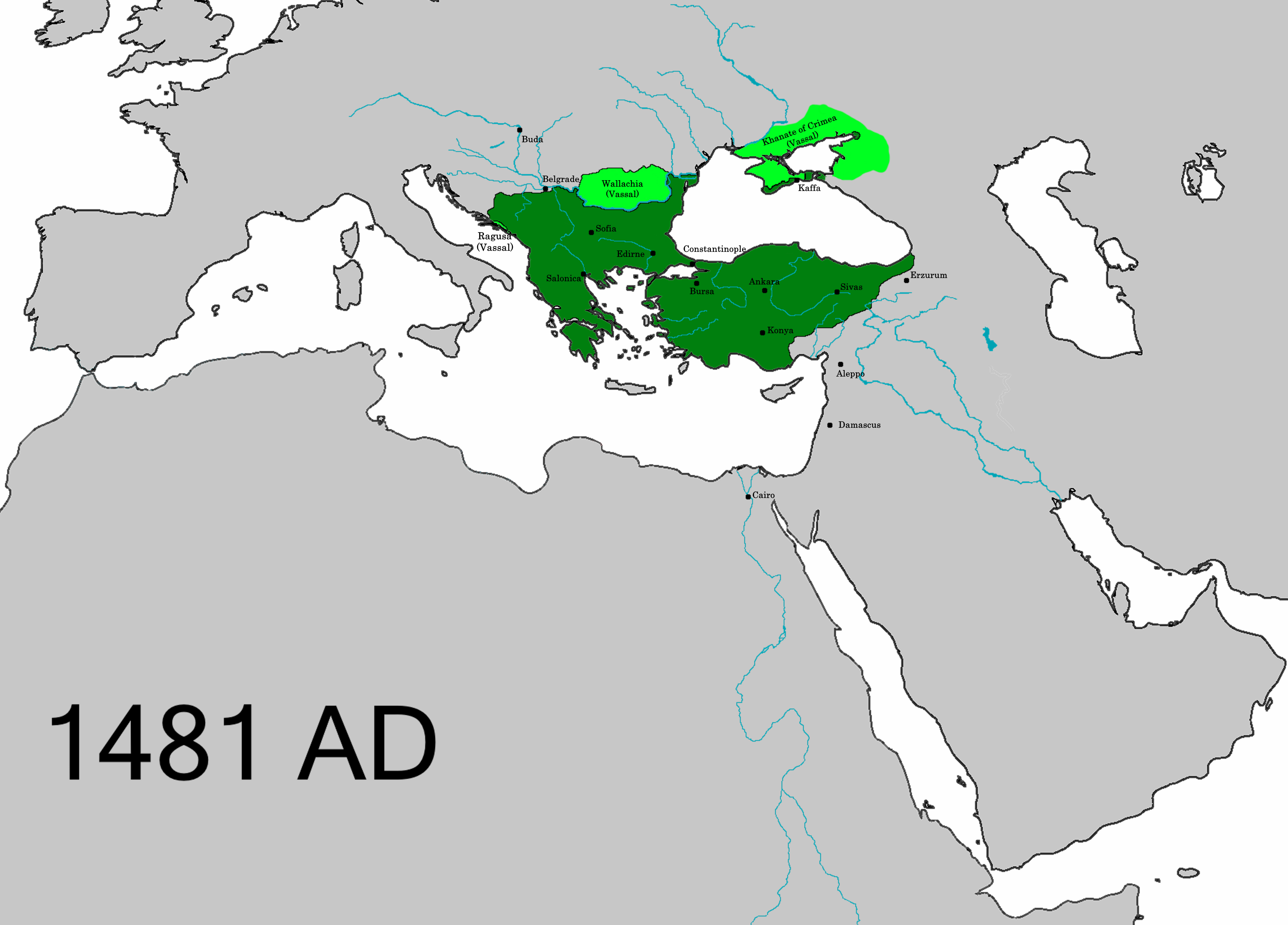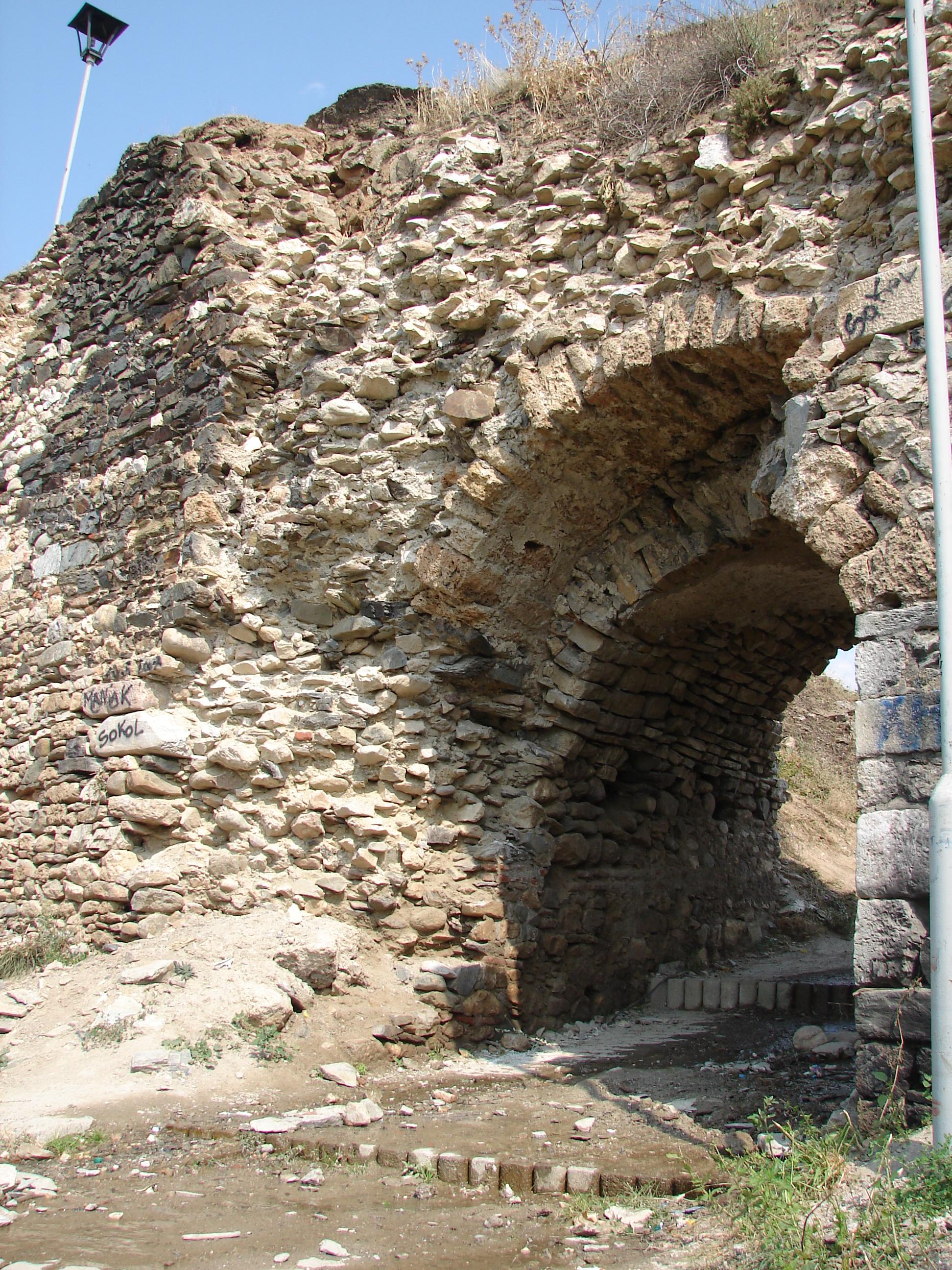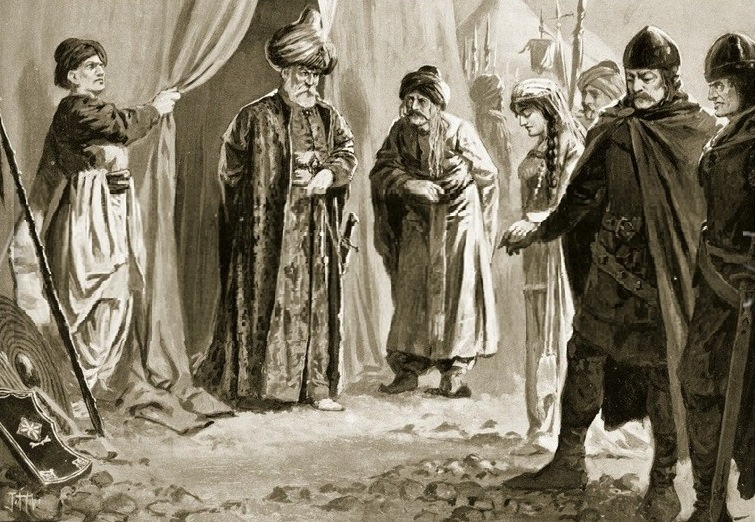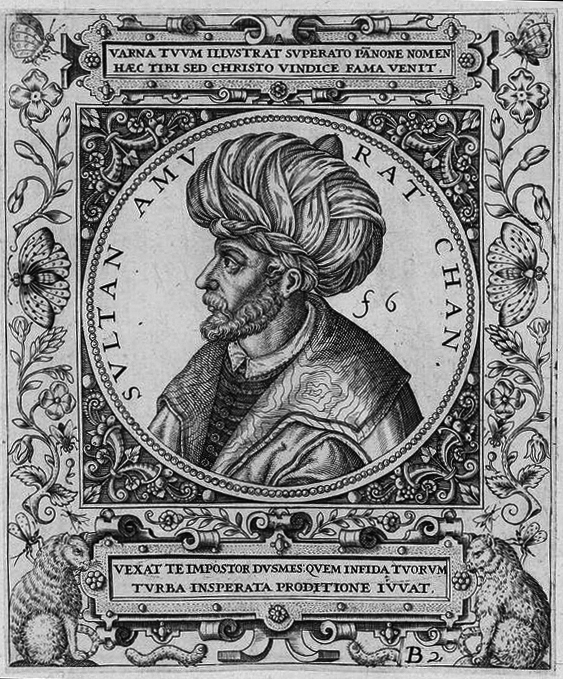|
List Of Consorts Of The Ottoman Sultans
This is a list of consorts of the Ottoman sultans, the wives and concubines of the monarchs of the Ottoman Empire who ruled over the transcontinental empire from its inception in 1299 to its dissolution in 1922. Honorific and titles Hatun Hatun () was used as an honorific for women in the Ottoman Empire, Ottoman period, roughly equivalent to the English term ''Lady''. The term was being used for the Ottoman sultan's consorts. When the son of one of the consorts ascended the throne she became ''Valide Hatun'' (Mother of Sultan). Sultan Sultan (سلطان) is a word of Arabic origin, originally meaning "authority" or "dominion". By the beginning of the 16th century, the title of sultan, carried by both men and women of the Ottoman dynasty, was replacing other titles by which prominent members of the imperial family had been known (notably ''hatun'' for women and ''bey'' for men), with imperial women carrying the title of "Sultan" after their given names. Consequently, the tit ... [...More Info...] [...Related Items...] OR: [Wikipedia] [Google] [Baidu] [Amazon] |
Ottoman Empire
The Ottoman Empire (), also called the Turkish Empire, was an empire, imperial realm that controlled much of Southeast Europe, West Asia, and North Africa from the 14th to early 20th centuries; it also controlled parts of southeastern Central Europe, between the early 16th and early 18th centuries. The empire emerged from a Anatolian beyliks, ''beylik'', or principality, founded in northwestern Anatolia in by the Turkoman (ethnonym), Turkoman tribal leader Osman I. His successors Ottoman wars in Europe, conquered much of Anatolia and expanded into the Balkans by the mid-14th century, transforming their petty kingdom into a transcontinental empire. The Ottomans ended the Byzantine Empire with the Fall of Constantinople, conquest of Constantinople in 1453 by Mehmed II. With its capital at History of Istanbul#Ottoman Empire, Constantinople (modern-day Istanbul) and control over a significant portion of the Mediterranean Basin, the Ottoman Empire was at the centre of interacti ... [...More Info...] [...Related Items...] OR: [Wikipedia] [Google] [Baidu] [Amazon] |
Anatolia
Anatolia (), also known as Asia Minor, is a peninsula in West Asia that makes up the majority of the land area of Turkey. It is the westernmost protrusion of Asia and is geographically bounded by the Mediterranean Sea to the south, the Aegean Sea to the west, the Turkish Straits to the northwest, and the Black Sea to the north. The eastern and southeastern limits have been expanded either to the entirety of Asiatic Turkey or to an imprecise line from the Black Sea to the Gulf of Alexandretta. Topographically, the Sea of Marmara connects the Black Sea with the Aegean Sea through the Bosporus and the Dardanelles, and separates Anatolia from Thrace in Southeast Europe. During the Neolithic, Anatolia was an early centre for the development of farming after it originated in the adjacent Fertile Crescent. Beginning around 9,000 years ago, there was a major migration of Anatolian Neolithic Farmers into Neolithic Europe, Europe, with their descendants coming to dominate the continent a ... [...More Info...] [...Related Items...] OR: [Wikipedia] [Google] [Baidu] [Amazon] |
Serbian Empire
The Serbian Empire ( sr-Cyrl-Latn, Српско царство, Srpsko carstvo, separator=" / ", ) was a medieval Serbian state that emerged from the Kingdom of Serbia. It was established in 1346 by Dušan the Mighty, who significantly expanded the state. During Dušan's rule, Serbia was one of the most powerful European states and, the most powerful in Southeast Europe. It was an Eastern Orthodox multi-ethnic and multi-lingual empire that stretched from the Danube in the north to the Gulf of Corinth in the south, with its capital in Skopje. Dušan also promoted the Serbian Archbishopric to the Serbian Patriarchate. In the Serbian Empire, the region of Kosovo was the most prosperous and densely populated area, serving as a key political, religious, and cultural center. Dušan's son and successor, Uroš the Weak, struggled to maintain his father's vast empire, gradually losing much of the conquered territory - hence his epithet. The Serbian Empire effectively ended wit ... [...More Info...] [...Related Items...] OR: [Wikipedia] [Google] [Baidu] [Amazon] |
Second Bulgarian Empire
The Second Bulgarian Empire (; ) was a medieval Bulgarians, Bulgarian state that existed between 1185 and 1422. A successor to the First Bulgarian Empire, it reached the peak of its power under Tsars Kaloyan of Bulgaria, Kaloyan and Ivan Asen II before gradually being conquered by the Ottoman Empire, Ottomans in the late 14th century. Until 1256, the Second Bulgarian Empire was the dominant power in the Balkans, defeating the Byzantine Empire in several major battles. In 1205, Emperor Kaloyan of Bulgaria, Kaloyan defeated the newly established Latin Empire in the battle of Adrianople (1205), Battle of Adrianople. His nephew Ivan Asen II defeated the Despotate of Epiros and made Bulgaria a regional power again. During his reign, Bulgaria spread from the Adriatic Sea, Adriatic to the Black Sea and the economy flourished. In the late 13th century, however, the Empire declined under constant invasions by Mongols, Byzantine Empire, Byzantines, Hungarians, and Serbia in the Middle Ages ... [...More Info...] [...Related Items...] OR: [Wikipedia] [Google] [Baidu] [Amazon] |
Kera Tamara
Kera Tamara (; - , known also as Tamara Hatun) was a Bulgarians, Bulgarian princess, the daughter of the Bulgarian Emperor Ivan Alexander of Bulgaria, Ivan Alexander and his second wife Sarah-Theodora, and the legal wife of the Ottoman Sultan Murad I. Life Kera Tamara was a sister of Ivan Shishman of Bulgaria, Ivan Shishman and Ivan Sratsimir of Bulgaria, Ivan Sratsimir. She was born probably around 1340 and originates from the Sratsimir dynasty, Sratsimir dynasty. The first husband of Kera Tamara was Despot (court title), despot Constantine. According to one theory he was the despot of Kyustendil, Velbazhd Constantine Dragash whose daughter Helena Dragash married the Byzantine Emperor Manuel II Palaiologos, Manuel II and became mother of the last Byzantine Emperor Constantine XI. However, that theory has been dismissed by the historians because in 1371 Kera Tamara was already a widow while Constantine Dragash died in 1395. Therefore, despot Constantine who was depicted in the Te ... [...More Info...] [...Related Items...] OR: [Wikipedia] [Google] [Baidu] [Amazon] |
Murad I
Murad I (; ), nicknamed ''Hüdavendigâr'' (from – meaning "Head of state, sovereign" in this context; 29 June 1326 – 15 June 1389) was the sultan of the Ottoman Empire from 1362 to 1389. He was the son of Orhan Gazi and Nilüfer Hatun. Murad I came to the throne after his elder brother Süleyman Pasha (son of Orhan), Süleyman Pasha's death. Murad I Ottoman conquest of Adrianople, conquered Adrianople in 1360s and made it the new capital of the Ottoman Sultanate. Then he further expanded the Ottoman realm in Southern Europe by bringing most of the Balkans under Ottoman rule, and forced the princes of Serbian Empire, Serbia and Second Bulgarian Kingdom, Bulgaria as well as the Byzantine Empire, Byzantine emperor John V Palaiologos to pay him tribute. Murad I administratively divided his sultanate into the two provinces of Anatolia Eyalet, Anatolia (Asia Minor) and Rumelia Eyalet, Rumelia (the Balkans). Titles According to the Ottoman sources, Murad I's titles included ''Bey' ... [...More Info...] [...Related Items...] OR: [Wikipedia] [Google] [Baidu] [Amazon] |
Gülçiçek Hatun
Gülçiçek Hatun (; "''rose blossom''", - ) was a Greek woman from Bithynia who became a concubine of Ottoman Sultan Murad I and ''Valide Hatun'' to their son Bayezid I. Biography According to a tradition, Gülçiçek was a concubine of Aslan Bey, one of the Princes of the Anatolian Muslim Principality of Karasids. She was captured when Orhan conquered the principality ( 1344) and placed in the Sultan's harem. Around 1359, when Orhan's son Murad had reached adulthood, she became his concubine. She gave birth to Murad two sons, Bayezid I and Yahşi Bey. She appointed her son Yahşi as trustee for an endowment deed she made for a Dervish Monastery. In her lifetime she established a religious and charitable foundation which demonstrated her Muslim piety publicly. With its revenues she built a mosque, the first Ottoman concubine to build one, and a tomb in Bursa where she was buried when she died, around 1400.The Nature of the Early Ottoman State, Heath W. Lowry, State Unive ... [...More Info...] [...Related Items...] OR: [Wikipedia] [Google] [Baidu] [Amazon] |
Theodora Kantakouzene, Wife Of Orhan
Theodora Kantakouzene (; - , called also Theodora Hatun) was a Byzantine princess, the daughter of Emperor John VI Kantakouzenos and the second legal wife of the Ottoman Sultan Orhan Gazi. Life Theodora was one of the three daughters of Emperor John VI Kantakouzenos by his wife Irene Asanina. The historian Nikephoros Gregoras erroneously calls her "Maria" in one passage. In January 1346, to cement her father's alliance with the rising Ottoman emirate and to prevent the Ottomans from giving their aid to the Empress-regent Anna of Savoy during the ongoing civil war, she was betrothed to the Ottoman ruler, Orhan Gazi. The marriage took place in the summer of the same year and it was an unprecedented event, since it saw a legitimate Christian princess united in a regular marriage to a Muslim sovereign, however the union was not contested by any religious authority, neither Christian nor Islamic. Her parents and sisters escorted her to Selymbria, where Orhan's representatives, i ... [...More Info...] [...Related Items...] OR: [Wikipedia] [Google] [Baidu] [Amazon] |
Byzantine Empire
The Byzantine Empire, also known as the Eastern Roman Empire, was the continuation of the Roman Empire centred on Constantinople during late antiquity and the Middle Ages. Having survived History of the Roman Empire, the events that caused the fall of the Western Roman Empire in the 5th centuryAD, it endured until the fall of Constantinople to the Ottoman Empire in 1453. The term 'Byzantine Empire' was coined only after its demise; its citizens used the term 'Roman Empire' and called themselves 'Romans'. During the early centuries of the Roman Empire, the western provinces were Romanization (cultural), Latinised, but the eastern parts kept their Hellenistic culture. Constantine the Great, Constantine I () legalised Christianity and moved the capital to Constantinople. Theodosius I, Theodosius I () made Christianity the state religion and Greek gradually replaced Latin for official use. The empire adopted a defensive strategy and, throughout its remaining history, expe ... [...More Info...] [...Related Items...] OR: [Wikipedia] [Google] [Baidu] [Amazon] |
Nilüfer Hatun
Nilüfer Hatun (, ''water lily'', called also Lülüfer Hatun or Ülüfer Hatun, died 1363), was a concubine of Orhan, the second Ottoman sultan, and the mother of Murad I, Orhan's successor. She was the first slave of Christian origin to become the mother of an Ottoman Sultan. Biography Nilüfer Hatun was an enslaved concubine of Greek origins, who entered Orhan's harem in 1325, where she was converted to Islam and given the name Nilüfer. The following year, she bore Orhan a son, the future Murad I. After 1331, she was transferred to Iznik together with her son. In March 1362, Orhan died and was succeeded as sultan by Nilüfer's son, Murad I. Nilüfer, thus, became the first woman of Christian slave origins to be the mother of an Ottoman sultan and the first Valide Hatun of the Ottoman Empire. During her lifetime, Nilüfer commissioned the construction of an imaret, an hammam, a caravanserai and eighteen other buildings for various uses, especially charitable. The da ... [...More Info...] [...Related Items...] OR: [Wikipedia] [Google] [Baidu] [Amazon] |
Bilecik
Bilecik is a city in northwestern Anatolia, Turkey. It is the seat of Bilecik Province and Bilecik District.İl Belediyesi Turkey Civil Administration Departments Inventory. Retrieved 30 January 2023. Its population is 74,457 (2021). The mayor is Melek Mızrak Subaşı ( CHP). The town is famous for its numerous restored Turkish houses. It is increasingly becoming more attractive to tourists. With its rich architectural heritage, Bilecik is a member of the European Association of Historic Towns and Regions. southeast from Bilecik is |
Asporça Hatun
Asporça Hatun (; born Holofira, Olivera or Glafira, died after 1362) was a Greek-Byzantine noblewoman, the first legal wife of Sultan Orhan of the Ottoman Empire. Biography Origins Asporça Hatun was born as Holofira (or Olivera or Glafira), a Greek-Byzantine noblewoman, but are not known others details about her origins.Uluçay 1980, pp.4-5Sakaoğlu 2008, pp.42-43Peirce 1993, pp.34-35 Contemporary rumors said she was a Palaiologos princess, a daughter, probably illegitimate, of the emperor Andronikos II or Andronikos III but most modern historians reject this version.Alderson 1956, XXII It's impossible that Asporça was daughter of Andronikos III because he was born in 1296 and Asporça had a son in 1310. Plus, Byzantine princesses married to Muslim rulers usually kept their own name and their Orthodox Christian faith, while Asporça took an Ottoman name and converted to Islam. Another thesis is that Asporça was the daughter of the Byzantine ''tekfur'' of Bilecik, who in 12 ... [...More Info...] [...Related Items...] OR: [Wikipedia] [Google] [Baidu] [Amazon] |







